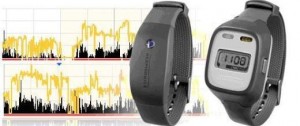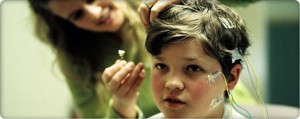We all know what poor sleep looks like (see: zombie apocalypse), but do we have a good understanding of what healthy sleep is? Most psychological and medical research on sleep has been focused on sleep disorders such as insomnia and sleep apnea, but healthy sleep is not necessarily the absence of these disorders. Since 1948, the World Health Organization (WHO) has defined health as “a state of complete physical, mental and social well-being and not merely the absence of disease or infirmity” (emphasis added). WHO has clearly stated that health and well-being is more than just the absence of infirmity, and sleep health can also be defined in a similar way. Earlier this year in Sleep, Dan Buysse published a perspective on how we can define, measure, and promote sleep health. Although sleep health is hardly a new term, it has seldom been explicitly defined as it was in Buysse’s article. He makes some very important points which I will summarize in this blog post.
How is sleep measured?
Sleep is a multi-faceted concept, and it has been measured in both psychological and medical research in a variety of ways. I’ll focus on three of the most common methods that sleep has been measured: self-report, behavioral, and physiological. The first (and arguably the easiest) way to measure sleep is to gather subjective reports of people’s sleep, using self-report survey instruments such as the Pittsburgh Sleep Quality Index (or the PSQI; authored by Buysse, himself). This is a well-validated scale that has been used in numerous studies, but it is limited in its assessment of sleep due to its nature as a self-report scale. Patients may not remember the exact time that they fell asleep the night before and may over- or underestimate the length of time they spent asleep. With only a subjective measure of sleep, there is no way of assuring the accuracy of the patient’s self-report. However, subjective sleep is extremely important to assess. By definition, sleep quality can only be assessed using self-report since it measures the subjective assessment of whether one’s sleep is good or poor. Also, using a scale like the PSQI is much less expensive than using behavioral or physiological measures and may be the most feasible option for smaller-scale research studies.
Sleep can also be measured on the behavioral level using an approach known as wrist actigraphy. An actigraph is a device that is worn around the patient’s wrist like a watch and has an accelerometer inside it to measure movement. The device is worn at all times and is used to assess objective sleep. After the patient has worn the actigraph for a set amount of days, the data from the device is downloaded onto a computer, and data analysts can determine how restful someone’s sleep was based on how much they moved while asleep. This method is widely used to assess many factors of sleep (e.g., duration, latency, awakenings during the night).
Sleep is also measured physiologically, using a method known as polysomnography (PSG) either in a sleep laboratory or in a patient’s home. This method involves an EEG to measure brain activity, an EOG to measure eye movements, an EMG to measure muscle activation, and an ECG to measure heart rhythms. PSG is used to obtain multidimensional data on sleep, and is arguably the most comprehensive way to assess sleep. PSG is the only way to measure sleep wave architecture, and it is often referred as the “gold standard” of measurement in sleep research. However, it is also one of the most expensive ways to measure sleep and requires a high level of equipment training.
What dimensions of sleep are indicative of sleep health?
Reviewing the literature on various dimensions of sleep and their associations with health-related outcomes, Buysse identified the five dimensions of sleep that seem to be the most relevant to defining sleep health. Each dimension was deemed as an appropriate indicator of sleep health because of its robust association with health-related outcomes as well as its potential to be expressed in a positive way, a necessary feature if sleep health is to be defined as more than just the absence of sleep-related infirmity. Here are the five dimensions that Buysse identified.
Sleep satisfaction/quality: As mentioned above, sleep quality is the subjective assessment of whether one’s own sleep is good or poor. Rather, it’s the subjective satisfaction with one’s own sleeping behavior/patterns. When you think about how satisfied you were with your sleep last night, that’s sleep quality.
Alertness: Often defined as the ability to maintain attentive wakefulness, daytime alertness. You can think about alertness as how likely or unlikely you are to maintain focus or doze off throughout the day.
Timing: Timing represents the temporal location in which sleep takes place within a 24-hour cycle. In other words, timing is conceptualized using the time you go to bed and the time you wake up.
Sleep Efficiency: Sleep efficiency is the amount of time spent in bed that you actually spend asleep versus awake. A high amount of sleep efficiency would indicate that falling asleep is relatively easy and you either 1) don’t wake up often in the middle of the night or 2) easily return to sleep after walking in the middle of the night.
Sleep Duration: Typically defined as the total amount of sleep obtained per 24 hours. How many hours did you sleep last night? That would be a rough estimate of your total sleep duration (unless, of course, you take frequent naps!).
Sleep health defined
Using these dimensions of sleep, Buysse offers this definition for sleep health:
Sleep health is a multidimensional pattern of sleep-wakefulness, adapted to individual, social, and environmental demans, that promotes physical and mental well-being. Good sleep health is characterized by subjective satisfaction, appropriate timing, adequate duration, high efficiency, and sustained alertness during waking hours. (p.12)
In reading this definition, you may have noticed that Buysse does not focus this definition on any one particular sleep disorder. Instead, he focuses on a definition of sleep health that can be assessed in the presence or absence of a sleep disorder across age groups. Additionally, this definition can be measured across multiple routes of measurement. Buysse also offers a new 5-item scale called SATED to assess sleep health. This new scale has not yet been validated, but it is promising due to its ease of administration and potentially powerful implications for sleep health. I can imagine this scale being used in primary care settings as well as research studies.
The importance of sleep health cannot be understated. Research has clearly demonstrated the association between poor sleep and both psychological and physical morbidity such as depression, coronary heart disease, diabetes, and hypertension (to name only a few). However, far less research has focused on the association between good sleep and positive outcomes such as high quality of life, well-being, and healthy physiological profiles. It is time we broaden our scope of sleep to include not only sleep disorders and deficits, but also sleep health.
References:
1. Buysse, D. J. (2013). Sleep health: can we define it? Does it matter?. Sleep,37(1), 9-17.
2. Buysse, D. J., Reynolds III, C. F., Monk, T. H., Berman, S. R., & Kupfer, D. J. (1989). The Pittsburgh Sleep Quality Index: a new instrument for psychiatric practice and research. Psychiatry research, 28(2), 193-213.
3. www.who.int/about/definition/en/print.html


